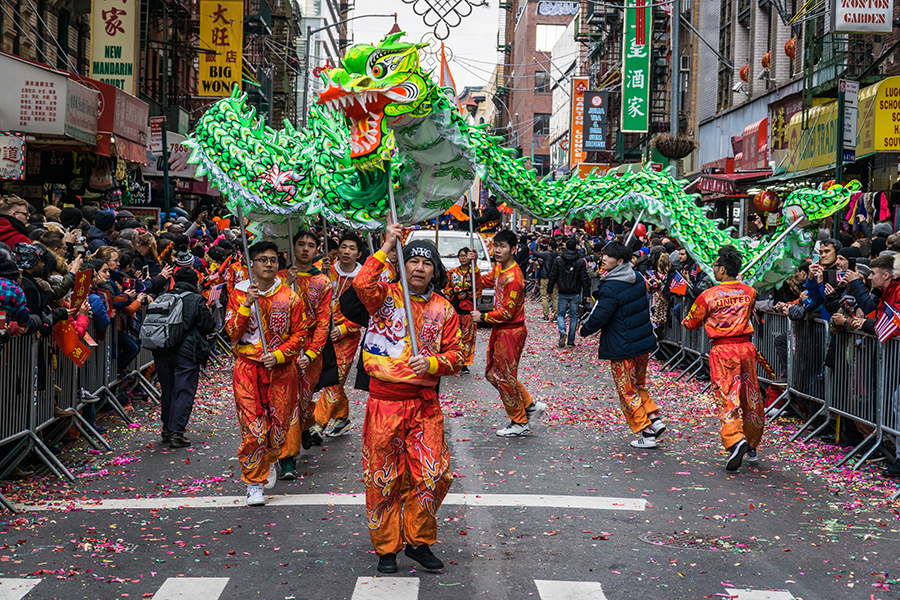The lunar new year begins on Sunday, January 22.
The United States is run primarily on the Gregorian calendar, which calculates a year as a chunk of 365 days (or 366, during leap years) and places New Year’s Eve on December 31. However, the U.S. is home to several cultures and thus several holidays that are determined by different calendars. This means that there are other New Years coming this month, one of the most prominent being the Lunar New Year on Sunday, January 22.
This holiday is a carryover from China, Taiwan, Hong Kong, Vietnam, South Korea, and other Asian countries which keep time using the lunisolar calendar. (You may hear it referred to solely as Chinese New Year, but its observance spans several countries and cultures.) The lunisolar calendar is a 354-day year based on the cycles of the Moon, as opposed to the Gregorian calendar, which is a 365-day year based on the Earth’s orbit around the Sun. The lunisolar calendar places the new year and the start of spring at this time.

The Lunar New Year is a time of new beginnings and joy, often spent with family and friends. It is often celebrated in Asian-American communities across the country, and is known by different names and observed in a variety of ways across cultures.
In Chinese culture, it is not only referred to as the New Year but also as the Spring Festival. It typically lasts about 15 days, meaning that this year it spans from January 22 to about February 5.
Each year on the Chinese calendar is assigned an animal from the eastern Zodiac, which, much like Western astrology, is meant to indicate the qualities of people born during any given year. This New Year begins the year of the Rabbit.
In Vietnamese, the holiday is called Tết Nguyên Đán (or simply Tết), meaning “festival of the first day of the year.” Tết festivities can last anywhere from three days to a week, and in the case of the former tends to be split into three distinct parts for the day before New Year’s Eve, New Year’s Eve itself, and the actual New Year’s Day.

Like the Chinese calendar, the Vietnamese calendar assigns an animal of the eastern Zodiac to each year, but while this is the Chinese calendar’s year of the Rabbit, this New Year kicks off the Vietnamese year of the Cat.
In Korean, the holiday is named Seollal, meaning “new year” or “New Year’s Day.” Like Tết, it typically lasts three days, from the day before New Year’s Eve to New Year’s Day, though this can vary depending on the day of the week it begins. It is the most widely observed holiday in Korea.
The Korean calendar also assigns animals of the eastern Zodiac to each year: 2023 is the year of the Water Rabbit.
There are several shared customs and celebrations across cultures on this holiday. Prominent among them are get-togethers with family, giving money to children and relatives for luck (often in red envelopes), enjoying meals of traditional food, having fortunes told, wishing others luck and happiness in the new year, and attending parades featuring traditional dance such as dragon dancing.
New York City is home to some of the most exciting Lunar New Year celebrations and events you could hope to find, including traditional dance performances, cultural workshops, parades, and more. You can find further information on such events here, and browse here to find the best places to enjoy some traditional cuisine.
If you have any questions or concerns, please feel free to contact us at info@gravityintprog.com. Stay safe and healthy!






